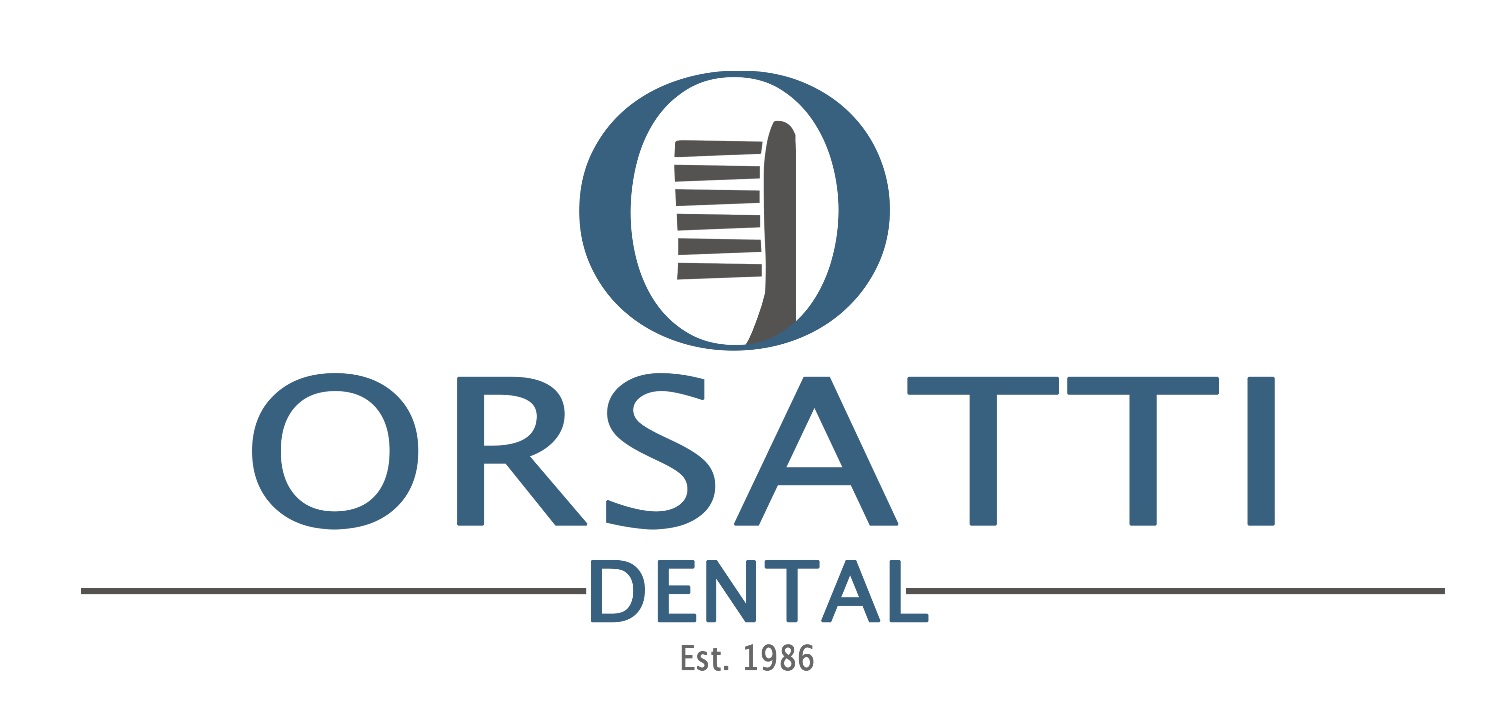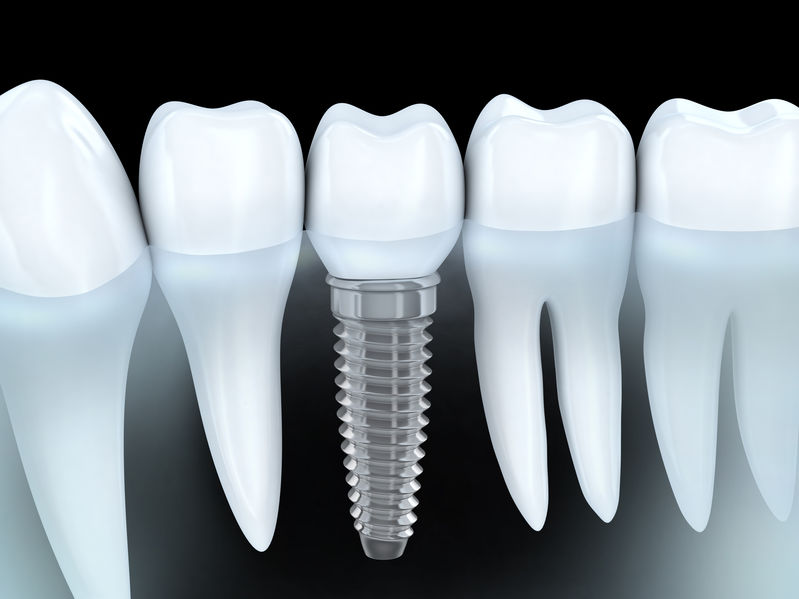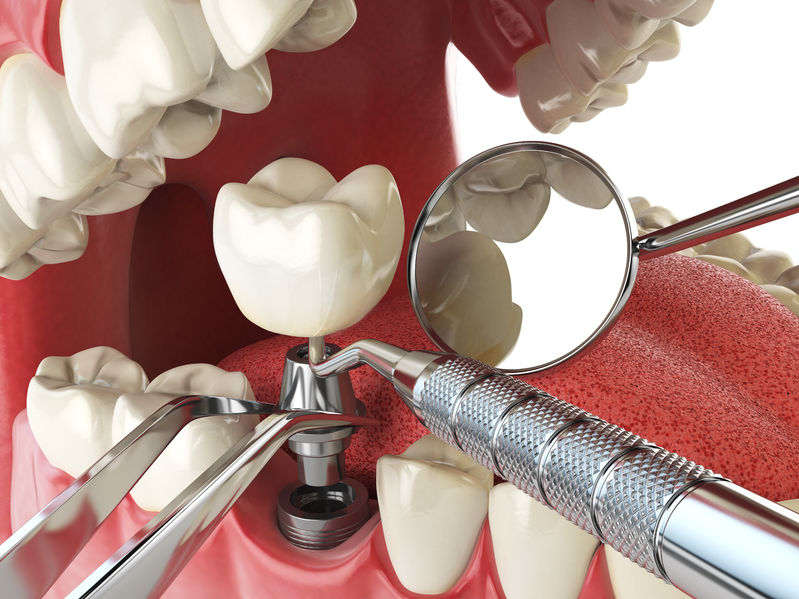Dental Implants: Restoring Your Beautiful Smile
Dental implants are the next best thing to your natural smile. If you have experienced the loss of one or more teeth, dental implants may be the right solution for you. Implants have become the most favored method of replacing missing teeth for several reasons. Dental Implants: Restoring Your Beautiful Smile First, dental implants are comfortable and attractive, especially when compared with other tooth replacement methods such as dentures or bridgework. Second, they are stronger and more durable, nearly as durable as real teeth.
Additionally, the dental implant procedure provides a healthy structure for replacement teeth, and that means a more comfortable fit and better functioning teeth. In fact, according to the American Dental Association’s Division of Communications, use of a dental implant for restoring your smile is the ‘closest thing to a natural tooth.’ But these aren’t the only advantages of dental implants.
Here are the basics about dental implants, the different types available, the procedure itself, and what to expect from dental implantation.
What are dental implants?
According to the American College of Prosthodontics, upwards of 115 million adult Americans have experienced loss of at least one tooth. Tooth loss can occur from gum disease, tooth decay, and injury, to name just a few. Dental implants have become the most popular choice among Americans for dealing with loss of one or multiple teeth.
Dental implants are the replacement of a tooth’s root that is surgically implanted into the jawbone in order to create a supportive foundation for an artificial tooth. For implantation, an artificial base that looks like a screw is constructed and then surgically implanted into the jawbone as a sturdy base for an artificial tooth, or ‘crown.’ A connector, or ‘abutment,’ is then placed atop the dental implant which will hold the crown.
The crown is the finishing touch and has been designed to match the appearance, size, shape, color, and fit of the patient’s natural tooth in order to be secured into his or her mouth so that normal oral function may be restored.
What are the different types of dental implants?
Dental implants have been used in restorative dentistry for more than four decades. In today’s periodontics industry, there are several types of dental implants used. The two main categories of implants are endosteal and subperiosteal. Each of these categories is named for its placement in relation to the jawbone.
Endosteal implants
More dental patients receive endosteal implants than any other. Endosteal implants are used for patients whose overall health is good and who have no extenuating dental circumstances such as shallow bone structure. The word ‘endosteal’ is defined as ‘located within the bone,’ which is how these implants are placed. They are surgically implanted into the jawbone using titanium screws and metal cylinders that hold the crown(s) in place.
Dental Implants: Restoring Your Beautiful Smile – Orsatti Dental. Alternatively, ceramic may be used; however, titanium is a far more common material utilized in endosteal implants. This category requires more than one surgery because the surrounding gum must heal around the implant, and because they are placed within the jawbone. Therefore, this type of procedure requires a second surgery.
Once this is completed, an abutment is connected to the implanted structure which will hold the crown. Endosteal implants are a much more permanent solution to missing teeth because of their implantation directly into the jawbone, which enables excellent functioning of dentition. The most common type of endosteal implants is root form.
Root form endosteal
Because they are a type of endosteal implant, root form implants are placed within the jawbone with screws. Because of the long metal cylinders and screws used in root form implants, these are utilized only on patients who have virtually no overall health issues and whose jaws are wide and long enough for their use. The surgery for root form implants takes roughly three to six months to heal, following which the abutment or connector can be placed in order to hold the crown(s).
Subperiosteal implants
Far less patients receive subperiosteal implants than endosteal. Subperiosteal implants are used for patients who may not be ideal candidates for endosteal implants. The most typical reason for this is that their jawbones are too short and/or too narrow to accept an endosteal implantation structure. These patients generally are also not candidates for dentures due to their smaller jawbones.
The word ‘subperiosteal’ is defined as ‘beneath the periosteum,’ which is a dense layer of tissue that covers certain parts of bone. Subperiosteal implants are placed on top of, not within, the jawbone. Posts (typically metal) are designed to extend through the gum line in order to accept the crown(s).
Plate form subperiosteal
Because they are a type of subperiosteal implant, plate form implants are placed on top of the jawbone. Also, since they are a subperiosteal, they are used on patients who are not ideal candidates for endosteal, sometimes because the grafting required for the root form cannot be performed due to jawbone inadequacies. These implants are long, flat structures that are placed on top of the jawbone underneath the gum.
Dental Implants: Restoring Your Beautiful Smile – Orsatti Dental As with root form, surrounding tissue and bone will grow around plate form implants.
The surgery for plate form implants takes roughly three to six months to heal, following which the abutment will be placed to hold the crown(s).
Why do people get dental implants?
There are several reasons why a patient may be considering whether or not to have a dental implant procedure performed. These include:
- A patient is missing one or more teeth. Losing a tooth can cause remaining teeth to shift, resulting in complications of dentition crowding together or becoming unevenly spaced.
- A patient possesses a jawbone that has reached its full growth. In this case, he or she will want to preserve jawbone, and so may choose to have a dental implantation procedure over bridgework or dentures because it is a healthier choice. The implant will provide more support than the other options available.
- Dentures can be uncomfortable because they do not fit well or do not provide adequate support for the jawbone. Additionally, dentures can make chewing and even speaking more difficult. Dental implants provide more comfort and better dental function, and so chewing, speaking, and all normal oral function can be restored.
- Dental implant procedures are more attractive because they look more like natural teeth.
What is involved in the dental implant procedure?
The American Dental Association has strict guidelines regarding approved processes dentists must follow concerning dental implant procedures. Following is a basic explanation of what to expect in your procedure.
- During dental implant surgery, the dentist will place the implant into the jawbone.
- The bone surrounding the placed implant will heal in order to hold it in place. This can take up to several months to occur.
- When this period of waiting is over, a dental lab will create a customized tooth (or teeth, depending upon your level of tooth loss). This artificial tooth is called a ‘crown.’ The crown will be created according to the shape, size, and color of your dentition in order to fit the artificial tooth into the dental implant that was surgically placed on your jawbone.
What else can I expect from my dental implant procedure?
- Your dental professional will need to review your medical history along with your dental history. Additionally, because this is a surgical procedure, a medical examination by your doctor will be necessary in order to determine if you are a proper candidate for dental implantation. Be forthcoming with your dentist about all your medical conditions and medications you are taking.
- Expect to schedule multiple visits to your dental office over a period of several months.
- Depending upon the type of implant you receive, you may holes drilled into your dentition in order for titanium screws to be inserted.
- Following your initial visit, you will wait several months to allow bone to grow around the titanium screws, during which time the bone will fuse the screws into place in order to position artificial teeth onto the them.
- Because dental implantation requires a surgical procedure, you may anticipate experiencing pain. Local anesthetic typically is used to minimize any potential discomfort. This type of anesthetic is used most often during dental implant procedures as it is sufficient for most patients. However, this is a subject you and your dentist will be able to discuss and decide upon before beginning your procedure. Some patients experience more pain than others. Speak with your dental professional about other options regarding anesthesia, such as sedation, if you feel your pain threshold is low.
- Your dentist will give you specific instructions regarding eating and drinking before a surgical procedure.
Are dental implants right for me?
You want to make the right decision about how to restore the function and beauty of your smile. Are dental implants right for you? You can only make that decision if you know the advantages and risks. If you are interested in dental implants, it’s a good idea to discuss it carefully with your dentist first. If you are in good general health this treatment may be an option for you. Any health conditions you have or symptoms you may be experiencing will be even more important in this case than your age.
You likely will need to be evaluated by your doctor prior to embarking on dental implant surgery. Chronic illnesses, such as diabetes, heart conditions, leukemia, arthritis, or oral issues can interfere with recovery following surgery. Patients with these issues may not be good candidates for dental implantation.
Additionally, if you are a tobacco user, you may experience slow recovery following surgery, and your doctor or dentist may see you as an unfit candidate. He or she may also ask you to undergo a smoking cessation program in order to experience better recovery following surgery.
What are the advantages and risks of dental implantation?
Advantages
Dental implants have a very high success rate, up to 95 percent or more. Dental implants function just like natural teeth. Also, your dental implants will be strong and durable, much more so than dentures. Implants provide a healthy structure for replacement teeth. Also, a smile restored by implants is just as attractive and natural-looking as real teeth. Because the implants are rooted into the jawbone, they feel and look like natural teeth. Additionally, implants last a very long time compared to dentures or bridgework.
Plus, with implants, your speech will not be altered like it can be with dentures. Finally, dental implants are just more comfortable than dentures because they are secured into the jawbone.
Risks
Dental implants come with a high success rate of up to 95 percent for upper jaw implants and 90 percent for lower jaw implants. The good news is that most dental implants that fail do so because of poor dental hygiene. When you have dental implant procedures performed, it is just as important to care properly for your teeth and gums as it is when you possess your own natural teeth.
Smokers tend to have a higher failure rate with dental implants. For this reason, your dental professional may recommend that you begin a smoking cessation program, possibly even before you have your dental implant procedure scheduled.
How can I find the right dentist in San Antonio to perform my dental implant procedure?
Best practice in the U.S. for finding a dentist in San Antonio is to search the website of the American Dental Association (ADA). Dentists approved by the ADA go through a rigorous approval process. Their processes for performing dental implant procedures must follow proper guidelines as set forth by the ADA.
To find a dentist in your area who is approved by the ADA, performs dental implants, and follows proper ADA guidelines for implant procedures, go the ADA’s ‘Find a Dentist’ page here. Type in all necessary information in the spaces provided, and be sure to choose ‘Periodontics’ or ‘Prosthodontics’ from the specialty drop-down menu.
San Antonio Dentist – Orsatti Dental
Located in San Antonio, the dental experts at Orsatti Dental have many years of experience in both dental implants, routine dentistry and dental restoration. If you’d like more information about what dental implants can do for you, contact Orsatti Dental in San Antonio today. The smile of your dreams is just a phone call away.
Orsatti Dental is a San Antonio Dentist office, serving all of San Antonio! Orsatti Dental is located at 15303 Huebner Rd, San Antonio, TX 78248.
Contact Orsatti Dental in San Antonio to learn more dental care, or to schedule an appointment with us!




